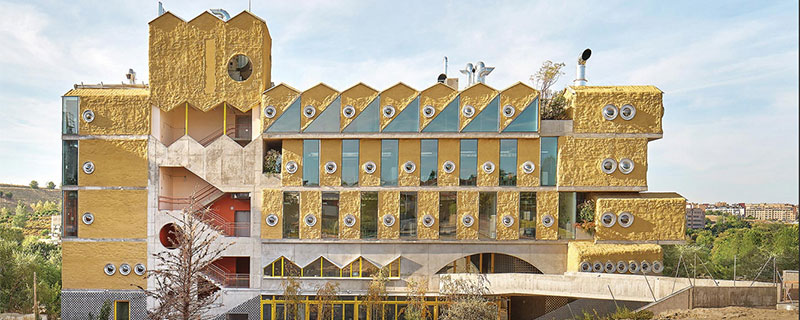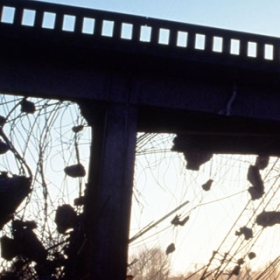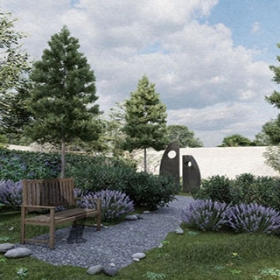Madrid – Educational Building Going up!
Andrés Jaque Takes an Unconventional Approach to Design and Construction at Madrid’s Colegio Reggio Explora
Spain
By Andrew Ayers
“When you dream with other people, you go so much further!” laughs Eva Martín, principal of the Colegio Reggio Explora in Madrid. “It’s far better than what you could have imagined alone,” she says of the four-year “journey” she and the teachers and parents undertook to build their school with New York/Madrid-based Office for Political Innovation (OFFPOLINN)—the architecture firm founded by Andrés Jaque, the new dean of Columbia University’s Graduate School of Architecture, Planning and Preservation. Iberian pioneers of the Reggio Emilia alternative-education approach, Martín and company opened Spain’s first Reggio school in 2009, in rented accommodations, but eventually needed a purpose-built home to comply with government regulations. There was more to it than mere bureaucracy, though, since the Reggio method sees the environment as the “third teacher,” alongside adults—parents and professional educators—and other children (the impact of the social group in learning). The building in which schooling takes place is therefore of prime importance.
Since the colegio is funded privately by a group of Reggio devotees, money was tight. Eleven miles north of central Madrid, where land is cheaper, the modest rectangular site, adrift in a middle-class suburban jumble, is linked to the street by a long, narrow driveway. “School buildings are often low-lying, spread-out affairs,” says Jaque, “but that wouldn’t have been efficient or cost-effective” in the context of the $9.1 million construction budget. Instead the colegio takes the form of a compact five-story block, with playgrounds in simple rammed earth out front and back. “One thing we liked about the location is its proximity to a network of parks running up the Castellana, Madrid’s main north–south axis,” says Jaque. This is partly what prompted OFFPOLINN to locate the school’s main entrance and “public” spaces—the library and the double-height sports/assembly hall—on level two, in what they describe as a piano nobile. Inspired by Veneto villas, this elevated floor looks out over the trees, connecting the viewer to the wider ecosystem. As in a castle, the main entrance is gained via a footbridge (the land slopes down from the street), and, in keeping with the idea of nobility, this part of the building, in concrete, is perched high on pilotis, and engineered as thinly as possible, thanks to an impressive series of structural arches that, Jaque says, reduced the need for steel reinforcement.

The building features a series of structural arches and triangular cutouts in the envelope. Photos © José Hevia,
Inside, structure, wiring, and mechanical heating and ventilation systems (there is no air-conditioning) are entirely exposed. “One reason we left everything naked was the limited budget,” explains Jaque. “But we also wanted an unfinished building that would be perceived as living and would evolve. Then there were the science teachers, who felt the innards that are usually hidden would make for a good teaching aid.” If the school looks like an anthropomorphic factory, it’s no accident, for besides studying monasteries, Palladian villas, and James Stirling’s Oxbridge colleges, OFFPOLINN also had Japanese Metabolism and Alejandro de la Sota’s airy, luminous Clesa dairy plant in mind. Inside, with all the ducting revealed, this biological-industrial image is yet further reinforced. While these days we’re used to exposed technics à la Centre Pompidou, architects usually seek to aestheticize them; here, however, where ceilings groan with ducts, piping snakes everywhere, and lumpy fireproofed columns block the way, the result is sometimes ugly, and even oppressive in certain circulation areas. Though it’s clearly deliberate—an informal aesthetic of raw truth whose unintimidating mess can stand whatever is thrown at it—one wonders what design lessons children will take away. Anything goes? A reactionary retreat into hyper-minimalism?
Source: Architectural Record





Leave a Reply
Want to join the discussion?Feel free to contribute!